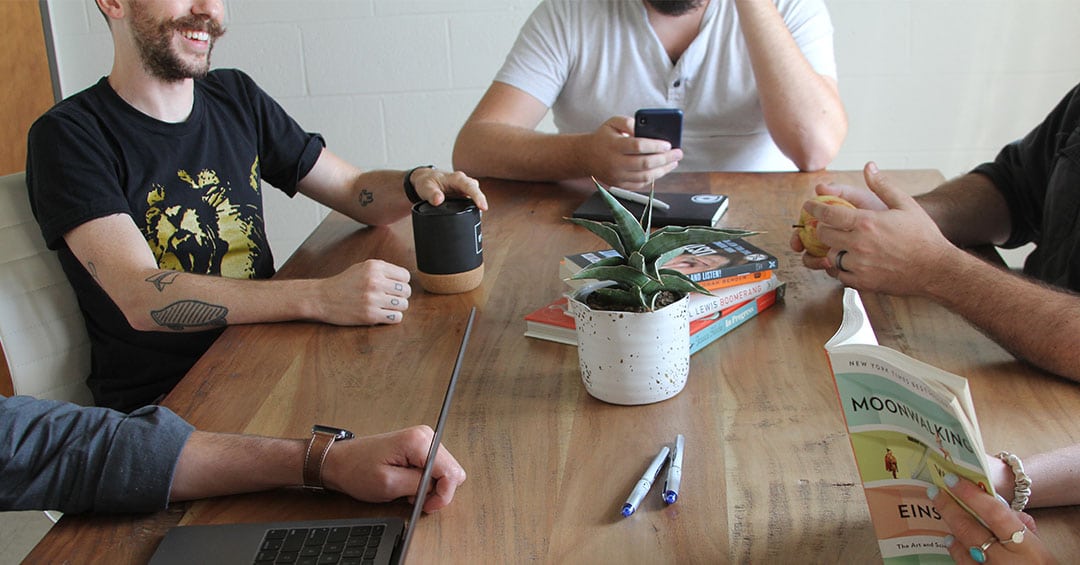The Creative Process
The creative process is a key component of any successful marketing agency. We see various promotional assets such as campaigns, magazine spreads, and billboards every single day. But have you ever considered how these ideas come to be? These attention-grabbing assets are developed through a refined strategy process that determines what the message will communicate, as well as tactics that determine how the message will be communicated. Since ideas take time to conceive and execute, it is common for those creating to use a defined process. This strategy process entails these 5 key steps: Preparation, Incubation, Illumination, Verification, and Revision.
Before we jump into what each stage looks like, it is important to understand the determinants of creativity. The goal of a marketing agency is to be creative, and simultaneously, logical and strategic. This means that there has to be a good balance of brand divergence and relevance. From a marketing perspective, divergence is the extent to which a promotional element contains characteristics that are novel, different, or unusual: the attention-grabbing components that keep the communicated message in the back of your mind. On the flip side, the finished product also needs to be relevant: meaningful, useful, or valuable. Combining these key attributes into one effective strategy is no easy feat, but it can be done successfully with these five steps:
1. Preparation
At the start of any project, it is important to research and gather relevant information. This research can consist of reading about a product or service, interviewing users, and even using the product or service yourself in order to become more familiar with it. Also, consider branding research which helps to gain better insight into how the target market connects with various brands. Researching how the target market interacts with brands will help identify the product-market fit, overall making the message more useful.
2. Incubation
This stage is exactly what it sounds like – simply letting the information you learned from your research occupy your mind. As a creative, this is where the right brain comes into play and ideas start to flow. It is important to soak in the information and let the ideas come naturally. A quality idea is difficult to come up with when it is being forced, therefore letting thoughts come naturally and brainstorming is necessary during this stage. Seek out inspiration – you never know what might spark that genius idea!
3. Illumination
This stage is where all the information and waiting pays off. The “wow” idea finally comes along, or maybe you even generate a variety of good ideas. It’s here that the central theme or “big idea” is developed and refined to effectively marry the product functions with the consumer needs in a fresh, evolutionary way.
Some approaches that can be taken: using a unique selling proposition, creating a brand image, and finding something about your product that stands out compared to the competition. It is important to keep in mind that the idea has to be generative, meaning that it has to be executed across various platforms. If you check off all the steps, you’ve got your big idea and now it’s time to execute.
4. Verification
The objective of this stage is to pass it along to other eyes within the agency and see if it really does in fact have that ‘wow’ factor. During this stage, multiple people evaluate the idea, reject unnecessary elements, refine the remaining pieces, and give suggestions for the final expression. You could think of this as a group evaluation, where constructive criticism is offered and taken into consideration.
5. Revision
In the last stage, the creative project is almost ready! You’ve got the go-ahead from your team, now it’s time to take your project outside the agency. Projects can be directed to focus groups, portfolio tests, and viewer reaction profiles. This step will gather the response of the consumer and is a true test of the effectiveness of a marketing strategy. From this information, we learn what speaks best to the audience and where to make the final adjustments.
Overall, we can see that the creative process is much more involved than simply coming up with an idea and executing it. Each step is necessary to provide the best marketing strategy to serve a company’s needs. Combining creative genius with strategic planning ensures that the outcome will satisfy both the artistic and the business mind.
Written by: Reynna Nelson
